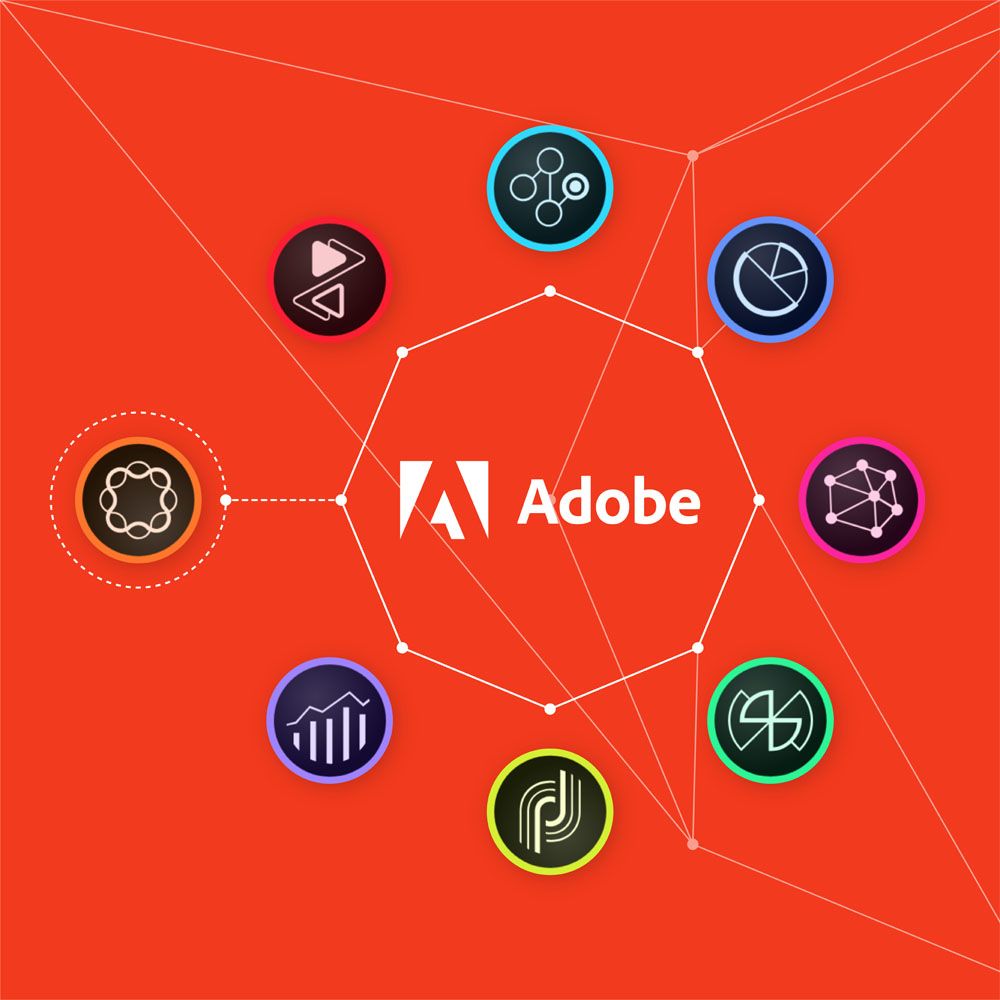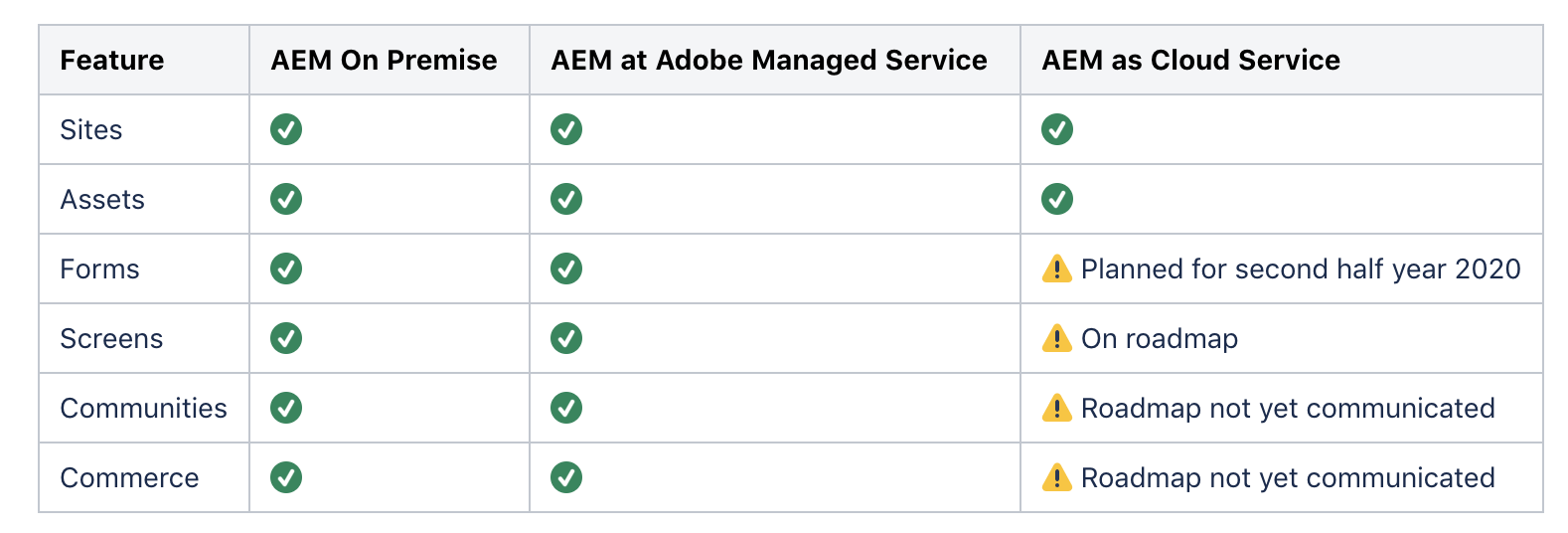AEM goes Cloud – is it worth the change?
Adobe is moving to the cloud with the Enterprise CMS. Read about the challenges and benefits of the changeover in the blog post.

Merkle: Cloud computing, cloud services, cloud everywhere - almost everyone is currently talking about "cloud". What exactly does this term actually mean?
Reto: Basically, these are computer resources such as storage or computing power in a data center, which can be accessed via the Internet. Nowadays more and more services are now offered via the cloud. Well-known examples are Netflix, Spotify or Google's G-Suite - which enables collaborative work entirely from the cloud. The software is no longer installed locally on your computer or on-premise on a server in your data center, but the user obtains a service from the cloud. With the announcement of AEM as a Cloud Service, Adobe has launched its Enterprise CMS as a service from the cloud. This development shows that
Merkle: Really, Adobe can now cloud - we thought Adobe Experience Manager was not designed for the cloud?
Reto: Exactly, Adobe has definitely done its homework. Through a new architecture based on proven solutions such as Kubernetes, a solid platform has been developed that is "cloud native by heart", which, nota bene, is offered at competitive rates. They have also managed to provide a tool, the Cloud Manager, which serves as a central point of contact and simplifies the complexity of the cloud architecture for the user.
Merkle: Okay, hold on. Now there is AEM On-Premise, as Adobe Managed Service and now as 'as a Cloud Service'. How is Adobe developing the product further?
Reto: All three variants are based on the same code base. Adobe's focus is on AEM as a Cloud Service. This is "version-less" and is automatically supplied with changes, mostly maintenance and security related, on a daily base. New functions are available at monthly intervals that can be planned. As a result, the changes are first available for AEM as a Cloud Service and then published for the other variants via feature packs.
Currently the feature set is not yet the same for all versions. The following table shows the current state:

Merkle: What advantages does AEM as a Cloud Service offer?
Reto:
General
- Improved user experience & performance
- Optimization of innovation cycles, faster time-to-market
- Lower costs through product innovation, best practices and automation
- Operation, availability and security are part of the service
Always On
- No downtimes & content freezes necessary
- Protection against cloud disasters & failures through automatic health checks
Always at Scale
- Ensuring performance of the overall solution through autoscaling
- Faster processing of assets (e.g. generation of metadata or different image sizes) through microservices
Always current
- Latest features are available through automatic product updates
- No more big-bang upgrades
- Necessary code adaptations are continuously implemented in small agile steps
Always learning
- Automatic performance & security updates
- Native access to Adobe Sensei (Machine Learning & Artificial Intelligence Service
Merkle: What does AEM as a Cloud Service offer?
Reto: Das Angebot umfasst:
Merkle: For whom is AEM as a Cloud Service the right solution?
Reto: This depends on various factors. I divide the companies into the following categories:
- Existing on-premise customers need to consider whether they want to continue to host and operate AEM themselves. Because Adobe is putting the engineering power into AEM as a cloud service, features will be available there first. If at all, they will be backported to the on-premise version at a later date. These benefits have the potential to reduce the total cost of ownership, which in turn should be of interest to many customers.
- Customers who require features that are not currently compatible with AEM as a Cloud Service need to evaluate the different solutions. Together with Adobe, they must determine if and when the appropriate features will be available.
- For customers for whom AEM is not yet running on 6.5, it is now necessary to decide whether the migration step to 6.5 should be made or whether the switch to AEM as a Cloud Service should be made directly, if possible.
- If AEM is already operational on 6.56.5, AEM as a Cloud Service should be considered the next major release and upgrade accordingly.
- New AEM customers should implement their project with the target architecture AEM as a Cloud Service. Depending on the system requirements, it might be possible that the project is initially started on a managed service environment and then migrated to AEM as a Cloud Service at a later date.
Merkle: Are there also risks, challenges and limitations that need to be considered?
Reto: Various on-premise upgrade projects have shown that with solid preparation, any project can be migrated. Even when switching to AEM as a Cloud Service, there are technical challenges that can be overcome with good project management.
By moving to the cloud, part of the autonomy is also outsourced. It requires trust in the cloud provider and the software partner coupled with contractual safeguards. It is also important to be aware that unforeseen situations can arise if, for example, due to geopolitical interests, a service is not available in a region at all or suddenly no longer available.
There are technical restrictions or changes. These include, for example:
- There are content areas in the repository (/apps and /libs) that are unchangeable at runtime. If an attempt is made to write to these areas in the custom code, the process will fail.
- OSGi bundles and settings can no longer be customized via Web Console. They must be committed via code.
- Direct changes in the repository of the publish instances are no longer possible.
- Classic UI is no longer available.
This list is not exhaustive. Identifying and weighing up the changes is part of the preparation phase.
Merkle: How secure are cloud solutions really?
Reto: Of course, this question arises immediately, especially in the context of cloud computing. Through proactive development, the latest industry and Adobe standards are always incorporated into the product and are available immediately. This greatly minimizes the risk of security threats or downtime.
AEM as a Cloud Service is also SOC 2 certified and ISO compliant. Further certifications for this year have been announced.
Merkle: What does it mean for companies when they want to switch to AEM as a Cloud Service?
Reto: From the authors' point of view, most things remain the same. There is no need for retraining because they already know the user interface (touch UI). The improved performance enables them to create experiences even more efficiently. The operation of AEM is now ensured by Adobe. As a result, the focus of the teams that have taken care of it so far is expected to shift to the development of the custom solution. Through the CI/CD pipeline via Cloud Manager, there are clear code requirements that must be met. These include security, reliability and maintainability ratings, code coverage and a clear separation of content and code. The basis of AEM remains the same, so developers can continue to use the full potential with the familiar tools and patterns.
Merkle: What do I do if I want to switch to AEM as a Cloud Service?
Reto: Both technically and organizationally, such a project must be professionally planned and implemented. Therefore my recommendation is to start a phase 0 in exchange with the partner of trust to define all necessary steps.
Merkle: What requirements must be met to make my company cloud-ready? (technical, cultural etc.)
Reto: The decision must be supported by the IT strategy. Experience shows that the question is not whether to switch to the cloud, but when. In order to ensure the connection of peripheral systems and interfaces, a solution-oriented cooperation between internal IT and Adobe is required. Furthermore, it is helpful if the development and project team knows the mindset of DevOps.
Merkle: Are there any success stories from well-known companies?
Reto: Yes, there are already the first companies like Esri or Under Armour who tool the step into the cloud and are very successful.
Merkle: Is cloud the only true future?
Reto: Adobe's ambition is clear: all on-premise customers should rely on AEM as a Cloud Service. It is also conceivable that Adobe will change its strategy so that AEM as a Cloud Service can also be operated in the private cloud. Even though Adobe is currently focusing on AEM as a Cloud Service, there are still many on-premise customers who cannot or do not want to go to the cloud. This circumstance also makes it possible to consider a scenario like Adobe Campaign, where with Adobe Campaign Classic (on-premise) and Adobe Campaign Standard (cloud) there are also two variants that are being further developed, as quite realistic.
Merkle: Will I lose if I don't switch to the cloud? When was this supposed to happen?
Reto: Efforts are underway at all levels of the market to move services to the cloud. In the context of Adobe CMS, one must also take a look at the EOL Matrix from AEM. Core support for AEM 6.4 will end in April 2021, but Adobe is vague about support for AEM 6.5 and speaks of quarterly service packs for an indefinite period. With features like auto-scaling, CDN and continuous automatic product updates you get a strong overall package - and all this at very attractive conditions. Therefore AEM as a Cloud Service should be set as the target architecture and the existing system should now be developed in this direction.
Go cloud: Your customer experience kickstart with Adobe Digital Foundation
You want to switch to the Cloud? We have the perfect match: the Adobe Digital Foundation. Our promise: Fast, focused and efficient, we will implement your Adobe project in just four months!











